|
I have spent many hours talking with colleagues in international development about how to tear down the barriers that block women’s progress around the world. Now, we’re confronting the fact that every sector, including our own, has a serious problem with sexual harassment and violence. The norms that allow these abuses are the same ones that disempower the poorest women, and only when they are dismantled across the globe will all women and girls be able to lead the lives they want.
Practically speaking, though, what can a philanthropic organization like ours do to promote a goal—equality everywhere—that’s impossibly large? We’ve been investing in women’s health for a long time and seen significant progress. But as I spend more time visiting communities and meeting people around the world, I am convinced that we’ll never reach our goals if we don’t also address the systematic way that women and girls are undervalued. With a new focus on women’s economic empowerment, connecting women to markets, making sure they have access to financial services, and empowering them to help themselves, we aim to help tear down the barriers that keep half the world from leading a full life. We’ll spend $170 million over the next four years to help women exercise their economic power, which the evidence suggests is among the most promising entry points for gender equality. Simply put when money flows into the hands of women who have the authority to use it, everything changes. First, their families benefit. One in three married women in the poorest countries have no say over major household purchases. Research shows, however, that women are much more likely than men to buy things that set their families on a pathway out of poverty, like nutritious food, health care, and education. In Niger, for example, when women had more financial autonomy, their families ate more meat and fish. One of the most astonishing statistics I’ve seen is that when a mother has control over her family’s money, her children are 20% more likely to survive. Second, everyone starts to re-think the part women can play in their own communities. A recent study in India found that merely owning and using a bank account led women to work outside the home more. As a result, they earned more money, but they also changed men’s perception of them. By defying a social norm that confined them inside, they started to change it. Women acting on their own can do what all the philanthropic organizations in the world can never accomplish: change the unwritten rule that women are lesser than men. Our role, as we see it, is to make targeted investments that give women the opportunity to write new rules. First, our new gender equality strategy will seek to link women to markets. Hundreds of millions of women help run small farms across Africa and Asia, raising crops and livestock, but in most cases, they do so without knowing what is a fair price for their products. We want to help them overcome this barrier and prosper from their labor. To do so, we’ll support women farmers as they organize in collectives that aggregate produce from small farms and sell it to buyers at a fair price and, where possible, use mobile phone applications that provide real-time price information. We also want more women to use digital bank accounts. Many governments send welfare or safety net payments to low-income families, but this money is usually controlled by men. We will work on systems in eight countries, including India, Pakistan and Tanzania, to deposit it into accounts controlled by women. Finally, we’ll support self-help groups where women and girls teach one another about everything from launching a small business to raising healthy children—and reimagine their standing in society. In India, the more than 75 million women who already belong to such groups have proven a force for real progress. We want younger girls to have the same opportunity. During adolescence, parents place more restrictions on their daughters, and girls’ range of movement shrinks—in South Africa, for example, by more than half. Self-help groups can widen their horizons. I gained a valuable perspective on self-help groups when I spent an afternoon in Jharkhand, India, with Neelam Bhengra. She joined a group to learn how to increase the yields on her farm. But gradually, she organized the members to advocate for themselves with local government. “If I’m alone, I can’t do anything,” she told me. But with the support of her group, she said, “I will keep fighting for women until I die.” Neelam is a force for generations to come. She told me all about her children, who were going to school and planning for a future Neelam herself never imagined. The data says that their children, Neelam’s grandchildren, will be even more healthy–and more prosperous. We want to help more Neelams find their voice, seize opportunities, and change their world—and their children’s world—into what they dream it can be.
2 Comments
It is the end of may, and thousands of student athletes are completing their final exams and graduating from university. If you are an employer, then whatever your recruiting period is you need to consider making a serious push to recruit and hire graduating student athletes.
While many of these athletes may have little work experience, what they do have is their passion and their work habits, which they have poured into building their athletic careers for the last 20 years. Now they are eager to figure out where to pour all their passion and apply their work ethic. 11 Reasons why you need to hire a past varsity athlete?
Setting goals, maintaining clear focus, working with a team and working under pressure, leading and motivating others, working hard consistently—these are some of the skills that athletes have been practicing for years, and now they are ready to transfer all of their passion, intensity, and hard work into your business. Don’t be fooled when you see lack of work experience on an athlete’s resume. The experience that she or he has had on the court or on the field has prepared them well for solid success in the working world. They may have played their last game, but it’s not all over for them. For them the game of life is just beginning. So harness the power of sport and find yourself an athlete to help take your business to a whole new level. Because Life is a Sport, and I know you both want to win. WOMEN RULE — Excited for POLITICO’s 5th annual “Women Rule” summit today in DC where I’ll be hosting a panel at 3:55 p.m. with S&P Chief U.S. economist Beth Ann Bovino, Rolls-Royce North America CEO Marion Blakey and SoulCycle CEO Melanie Whalen. We’ll be talking about how the U.S. economy could be in much better shape with more women in top executive positions and in the workforce more broadly. A couple of factoids per POLITICO’s Luiza Savage: There are 32 women CEOs of Fortune 500 companies — that’s a historic record but only 6.2 percent; There are fewer large companies run by women than there are by men named John. FIRST LOOK: A new report out Tuesday from Beth Ann and Jason Gold on women and U.S. GDP finds: “[A] dual-pronged effort of increasing entry and retention of more women to the American workforce, particularly those professions traditionally filled by men, represents a substantial opportunity for growth of the world’s principal economy, with the potential to add 5%-10% to nominal GDP in just a few decades. “If women entered, and stayed, in the workforce at a pace in line with, say, Norway, the U.S. economy would be $1.6 trillion larger than it is today, according to a scenario analysis conducted by S&P Global economists.” Event begins at 8:00 a.m. Featured speakers include: actress Kate Bosworth, “Me Too” movement founder Tarana Burke, Transportation Sec. Elaine Chao, Kellyanne Conway, Sen. Kirsten Gillibrand (D-N.Y.) and more. Livestream: here. FREEDOM CAUCUS NEARLY TOPPLES TAX VOTE — POLITICO’s Bernie Becker, Sarah Ferris, and Colin Wilhelm: “House conservatives threatened to derail a key tax vote on Monday in an attempt to win more influence over the GOP's spending strategy, just four days before the deadline to fund the government. In a dramatic political stunt, more than a dozen members of the House Freedom Caucus withheld their support for a crucial procedural vote on the GOP’s tax bill, threatening an embarrassing blow to GOP leadership. “The conservatives eventually relented, approving what had been thought to be a formality — a motion to appoint negotiators to hammer out a final tax bill with the Senate. But the frenzy on the House floor underscored the divisions within the GOP over a spending strategy this month, and that the Republicans’ march toward overhauling the tax code — which has proceeded with relatively little drama so far — could get caught up in the process.” HOUSE CONFERENCE MEMBERS — After the Freedom Caucus stood down on Monday, Ryan ended up naming nine members to the conference committee, headlined by Ways and Means Chairman Kevin Brady (R-Texas). Reps. Devin Nunes (R-Calif.), Peter Roskam (R-Ill.), Diane Black (R-Tenn.), Kristi Noem (R-S.D.), Rob Bishop (R-Utah), Don Young (R-Alaska), Greg Walden (R-Ore.) and John Shimkus (R-Ill.) were also named as conferees.” Read more. FIRST LOOK II: TRUMP MENTIONED LESS ON EARNINGS CALLS — Per report out this a.m. from Hamilton Place Strategies on Q4' 16 to Q3 '17 earnings call transcripts: “The number of earnings calls mentioning President Trump declined 81 percent between January and late November … The count of calls mentioning tax reform have increased 137 percent since last quarter. … “Mentions of company culture — inclusive of corporate social responsibility, diversity, and harassment — have increased 32 percent year-over-year in 2017 … Amazon was mentioned on almost eight percent of all earnings calls so far in 2017, outstripping Google in second place with four percent” NEW FROM TPC — The Urban Institute/Brookings Tax Policy Center in its latest analysis of the Senate bill: “We find the bill would reduce taxes on average for all income groups in both 2019 and 2025. In general, higher income households receive larger average tax cuts as a percentage of after-tax income, with the largest cuts as a share of income going to taxpayers in the 95th to 99th percentiles of the income distribution. “On average in 2027, taxes would change little for lower- and middle-income groups and decrease for higher-income groups. Compared to current law, 7 percent of taxpayers would pay more tax in 2019, 10 percent in 2025, and 48 percent in 2027.” Read more. BONKERS QUOTE OF THE DAY — This time goes to House Minority Leader Nancy Pelosi on the tax bill: “It is the end of the world. … This is Armageddon.” SAY WHAT YOU want about the merits of this tax bill. It’s got issues on debt impact, middle class tax hikes and the big bet on corporate rate cuts. But the end of the world it is not. Saying it is just makes one sound ridiculous. GOOD TUESDAY MORNING — Greetings from DC! Hope to see some of you at “Women Rule.” Email me on bwhite@politico.com and follow me on Twitter @morningmoneyben. Email Aubree Eliza Weaver on aweaver@politico.com and follow her on Twitter @AubreeEWeaver.
THIS MORNING ON POLITICO PRO FINANCIAL SERVICES -- Victoria Guida on Acting CFPB Director Mick Mulvaney’s comments that he has no plans to fire Leandra English, the agency’s deputy director who is suing him. To get Morning Money every day before 6 a.m., please contact Pro Services at (703) 341-4600 orinfo@politicopro.com. DRIVING THE DAY — President Trump lunches with members of the Senate GOP at the White House … At 1:45 p.m., Trump “leads a discussion with American business owners and their families” … Senate Banking at 10:00 a.m. marks up the "Economic Growth, Regulatory Relief and Consumer Protection Act" and votes on the nomination of Jerome Powell to be Fed chair … ISM Non-manufacturing at 10:00 a.m. expected to dip to 59.0 from 60.1 … HEARING PREP — Compass Point’s Isaac Boltansky on the Senate Banking reg relief bill: “We expect the following during the mark-up: (1) an intent focus on the mechanics of the bank stress test changes; (2) a handful of peripheral amendments … (3) a series of messaging amendments with no path to inclusion; and (4) questions relating to the $10B threshold vis-a-vis the QM safe harbor and bank regulatory offramp. “Securing floor time in the Senate is an unknown variable given ongoing tax reform efforts and uncertainty regarding Sen. Schumer's procedural preference, but we believe S.2155 could clear the Senate in January or February.” GET SMART FAST — BI’s Josh Barro with a good read on exactly how the tax bill will impact folks: “In the near term, the bill will give most Americans a tax cut. It's also likely to boost the economy at least a little bit over the next couple of years — though its positive economic effects will fade over time, and may even turn negative by the end of the decade, depending on which analysis you believe. … “The first sign of the tax changes should show up in workers' paychecks in January, when employers adjust tax withholding to reflect lower (or, in the case of an unfortunate few, higher) tax liability.” Read more. DAGGER AIMED AT NEW YORK — NYT’s Ben Casselman and Patrick McGeehan: “The tax bill approved by the Senate is many things, offering a huge tax cut for corporations, lower rates for the wealthy, and a big victory for Republicans and the White House. It is also an economic dagger aimed at high-tax, high-cost and generally Democratic-leaning areas — most notably New York City and its neighbors. “The bill, if enacted into law, could send home prices tumbling 10 percent or more in parts of the New York area, according to one economic analysis. It could increase the regional tax burden, complicating companies’ efforts to attract skilled workers. It could make it harder for state and local governments to pay for upgrades to the transit system and other infrastructure” Read more. COAL CEO SLAMS TAX BILL — CNBC’s Michelle Fox: “The Senate's tax overhaul bill is a ‘huge tax increase’ on certain businesses, said Robert Murray, chairman and CEO of coal giant Murray Energy. Murray, who has been a big supporter of … Trump, told CNBC he's specifically upset about the decisions to keep the alternative minimum tax and to take away the deduction for net interest expense as a cost of business. “He said the Senate legislation will raise Murray Energy's taxes by $60 million a year, ‘notwithstanding the other so-called benefits the Senate has proposed.’ ‘This means that very capital-intensive, highly leveraged employers, like coal-mining companies, will be forced out of business, with tragic consequences for our families and for many regions of our country,’ Murray said” Read more. PAID LEAVE INCENTIVE LIKELY TO STAY — Bloomberg Law’s Tyrone Richardson: “A measure that would offer tax incentives for companies to provide paid leave for employees is predicted to remain intact as House and Senate lawmakers start negotiating a compromise to the tax reform bill this week.” Read more. RYAN THOUGHT ABOUT DUMPING FRELINGHUYSEN — POLITICO’s Rachael Bade and John Bresnahan: “Speaker Paul Ryan and his leadership team discussed replacing House Appropriations Chairman Rodney Frelinghuysen after he bucked the party and voted against the GOP tax bill, multiple sources told POLITICO. Ryan, House Majority Leader Kevin McCarthy (R-Calif.) and Majority Whip Steve Scalise (R-La.) considered calling up the GOP steering committee charged with selecting chairmen to force a roll call on whether Frelinghuysen should maintain his position. “Scalise, three sources said, pushed hard for the move and was livid that the New Jersey Republican opposed the legislation that leaders believe is vital to maintaining their majority. … Spokespeople for Ryan's office and the Appropriations Committee declined to comment.” Read more. CBOE, CME POISED FOR BITCOIN BATTLE — FT’s Phillip Stafford: “Chicago’s two largest derivatives exchanges are going head to head in coming weeks to become the U.S. market of choice for bitcoin futures trading. “Cboe Global Markets said on Monday it would begin trading its bitcoin futures contracts, known as XBT futures, next week, on December 11, offering free trading for the rest of the month to help spur transactions. That will steal a march on its rival, CME Group, the world’s largest futures exchange, which will launch its futures contracts the following Monday. Read more. And hedge funds are getting ready — Bloomberg’s Rob Urban and Sonali Basak: “The planned introduction of bitcoin futures contracts at CME Group Inc., Cboe Global Markets Inc. and Nasdaq Inc. will make it much easier to bet on a decline. “Hedge funds, which have largely stayed on the sidelines, are waiting for the Chicago Mercantile Exchange’s futures market to open for a fresh opportunity to bet against the cryptocurrency, according to more than a half dozen people trading the assets. Read more. SEC TARGETS INITIAL COIN OFFERING ‘SCAM’ — WSJ’s Paul Vigna: “The U.S. Securities and Exchange Commission on Monday announced its first-ever enforcement action by its new cyber unit against an initial coin offering, alleging a Canadian company violated U.S. securities laws in raising $15 million through this new, red-hot area of finance. “Charges against the company, described by the agency as a ‘scam’ run by a ‘recidivist Canadian securities law violator,’ were brought by the unit as it looks to crack down on potential abuse in the cryptocurrency arena.” Read more. SEC TO PROBE IF BANKS HELPED HEDGE FUNDS INFLATE RETURNS— Bloomberg’s Matt Robinson: “Wall Street banks are known to fiercely compete for hedge-fund clients because of the lucrative trading profits they provide. The U.S. Securities and Exchange Commission is now investigating whether some banks crossed the line to win business by offering hedge funds bogus price quotes on hard-to-value bonds, said two people familiar with the matter. The SEC’s concern: As a reward for helping hedge funds make money — by submitting quotes at requested levels — banks got trades steered their way.” MORGAN STANLEY LAUNCHES ‘ROBO’ SERVICE — WSJ’s Lisa Beilfuss: “Morgan Stanley has launched an automated-advisory service, the latest wealth-management firm to expand digital offerings in a bid for younger investors’ assets. The New York brokerage firm said its Access Investing ‘robo’ service is available starting Dec. 4 to clients with at least $5,000 to invest. The service will charge 0.35 percent of assets annually. Fees exclude those levied by fund managers. … “Executives said Morgan Stanley’s robo launch is meant to attract a new generation of clients, many of them the children of existing customers positioned to inherit significant wealth. ‘Access Investing is an opportunity for financial advisers to grow their book of business by making connections early,’ said Naureen Hassan, the firm’s chief digital officer.” Read more. NEST EGGS HAVE NEVER BEEN BIGGER — Bloomberg’s Jordan Yadoo: “As U.S. stocks continue hitting new highs, President Donald Trump is encouraging Americans to check out their retirement accounts. ‘Look at your 401-k’s since Election,’ the president tweeted Monday morning. ‘Highest Stock Market EVER! Jobs are roaring back!’ Indeed, equity market gains have pushed average IRA and 401(k) balances to record levels. Unfortunately, there’s nothing to see for about half of American households that have no such retirement-savings vehicles. “Fidelity Investments, the nation’s largest administrator of retirement plans, said the average 401(k) balance in its accounts hit a record $99,900 in the third quarter while the average IRA rose to an all-time high of $103,500. Balances increased 10 percent from the same period a year ago, according to the Boston-based investment firm.”  1. The Mindful Giver Hali Lee, 51, founder of the Asian Women Giving Circle and co-founder and co-executive director of Faces of Giving, dedicated to amplifying the power of philanthropy. "In my mind's eye, I'm 28 years old, so the gift of now is that I have the energy and ideas of a younger person with the experience and insight of an older person. It's impossible to have everything, do everything, be everything. It is possible to do well enough, get by, try your hardest, be okay with the grays and the imperfects and to have a good enough time — dare I say fun — while doing so." 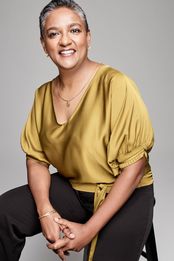 2. The Social Reformer Sujatha Jesudason, 51, Professor of Management at the New School and founder and Executive Director of CoreAlign, a reproductive justice organization. "At this age, I'm trying new things — what better time to risk it all? I just moved to New York City for the first time in my life. I'm the most impactful I've ever been in my work, and I'm also transitioning into the role of mentor. More of my energies are going into supporting other women, and in this political moment, that is powerful. We need to go all out."  3. The Breakthrough Researcher Dr. Carolyn Westhoff, 66, a leader in contraceptive research and family planning services at New York Presbyterian Hospital at Columbia University Medical Center. "When I turned 60 I thought, 'What would be worth accomplishing at work in the next 10 years?' and I chose to focus on enduring problems in the area of oral contraceptives, how to move those forward. In my 60s, I'm calmer and wiser, with a lot of history to draw on when issues arise — and I'm so grateful that the smart, idealistic young people I work with are not despairing even now. They're dynamite."  4. The Design Innovator Ruth Lande Shuman, 74, founder of Publicolor, a not-for-profit organization using design projects to empower struggling students to realize their potential. "Curiosity continues to imbue my work, which allows me to be flexible and responsive to new ideas. My age and experience mean that I can act as a mentor to young talent, which is enormously energizing! I am more patient, but I still have a sense of urgency around my work, and I want to keep growing Publicolor's impact, helping even more high-risk low-income students reach their potential." 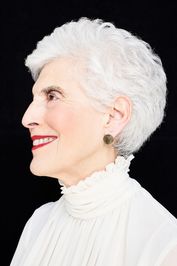 5. The Founding Feminist Marie Wilson, 77, founder of the White House Project, the Ms. Foundation for Women, and creator of Take Our Daughters to Work Day."It's hard for me to slow down, even now. What keeps people strong and healthy is the ability to make change — in their job, in their community or in their home. What's kept me sane is the continual ability to do something about what's wrong in the world — through the civil rights movement, the women's movement, the gay rights movement, and all the things we are struggling with right now. I get up every morning and I know there's something I can and must do." 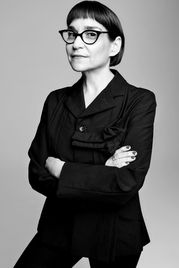 6. The Cultural Curator Nancy Spector, 58, Artistic Director and Jennifer and David Stockman Chief Curator at Solomon R. Guggenheim Museum."At this point in my life I am able to be decisive and direct in my leadership but also still open and attuned to what is new, radical, and risky in my field. I am deeply committed to doing what I love, honing my curatorial skills, and looking for opportunities to use art to address the profound concerns of our time."  7. The Intrepid Advocate Sayu Bhojwani, 50, founder and President ofNew American Leadersand author of People Like Us, about American democracy. "As an immigrant woman of color, I represent so much that is under attack in this country today. Yet I have never been more sure of who I am and what I believe is possible here. That I continue to lean into my work at the intersection of immigration and politics is a testament for women like me to never shy away from the battle for our place at the table." 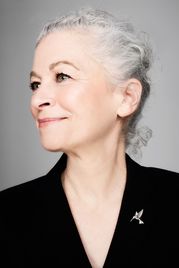 8. The Eco Protector Deborah Goldberg, 63, Managing Attorney ofEarthjustice's, Northeast regional office. "I work as an environmental lawyer and we are trying very hard to protect a healthy planet for all species. Right now I'm working to get New York State law to require cleaning products to disclose their list of ingredients so people aren't bringing home things that will make their families sick. These are difficult times, and at this age, I have a long view — I know that we need to stay hopeful and keep fighting."  9. The Scholar Kimberlé Crenshaw, 58, renowned civil rights advocate and leading scholar of critical race theory at the UCLA School of Law and Columbia Law School. On intersectionality, a term she helped advance: "Without frames that allow us to see how social problems impact all the members of a targeted group, many will fall through the cracks of our [social justice] movements. When there's no name for a problem, you can't see a problem. When you can't see a problem, you can't solve it."  10. The Organizer Heather Booth, 72, organizer for justice and democracy. "It is a gift to be able to do the work building a better society where all people will be treated with dignity and respect. And at this age, I am grateful to have a little more confidence than I did earlier. We are in perilous and inspiring times. The stakes are so high, but often out of the greatest crisis comes the greatest progress. But only if we organize." I am not a masochist, and clearly as a singer in a rock ‘n’ roll band I prefer the roar of the stadium’s affection to the whistles and boos of town-hall politics. But I must say I quite enjoyed the trouble I got into about a year ago when I was the lone man honored as part of Glamour’s Women of the Year awards. My favorite trash-talking tweet came from a woman who said that in my defense, my glasses did make me look like a 75-year-old granny from Miami. Or another who said it was inspiring how I’d overcome “the adversity of being a millionaire white dude.”
I was aware and I was glad that I was being offered up as a firestarter for a debate the magazine rightly wanted to have about the role of men in the fight for gender equality. It seemed obvious to me that the sex who created the problem might have some responsibility for undoing it. Men can’t step back and leave it to women alone to clean up the mess we’ve made and are still making. Misogyny, violence and poverty are problems we can’t solve at half-strength, which is the way we’ve been operating for a few millennia now. I say it seemed obvious to me, but if I’m honest, it didn’t always. I have been home-schooled on this issue in a very powerful way by my wife Ali and our two daughters. The news that I was getting Glamour’s first Man of the Year award amped up a conversation in our house–that Eve and Jordan think is the only conversation–about the fact that, as Jordan reminds me, there is nowhere on earth where women have the same opportunity as men. Nowhere. Which has something to do with the fact that around the world, there are 130 million girls who are not in school. That’s so many girls that, if they made up their own country, it would be bigger in population than Germany or Japan. Denying girls what an education offers–a fair shot, a path out of poverty–means that women can work the land but can’t own it; they can earn the money but can’t bank it. This is why poverty is sexist, as we say, and say loudly, at ONE to anyone listening, especially the world leaders who are supposed to guarantee universal access to education by 2030, the target they set in the Sustainable Development Goals. There isn’t just room for righteous anger at the injustice of all this, there is a need for it and for outrage at the violence–physical, emotional and legal–that perpetuates it. But there is also, in the facts, room for hope. Because the research is clear–it’s plain on the page and has been proved on the ground–that funding girls’ education isn’t charity but investment, and the returns are transformational. Give girls just one additional year of schooling and their wages go up almost 12%. Give them as much schooling as boys get and things really start changing. Closing the gender gap in education could generate $112 billion to $152 billion a year for the economies of developing countries. When you invest in girls and women, they rise and they lift their families, their communities, their economies and countries along with them. They rise–and they lead. That is, unless they continue to be held back and pushed down. Which could be the case. We’ve had a hard lesson over the past year that the march of progress is not inevitable. Sexism is rampant, conscious and unconscious. I’m still working on my own. Hopelessness is running high right now, and cynicism is cresting. But these are things the world can’t afford. There are 130 million girls counting on women and men to get our collective act together, push for better policies and pressure politicians to do more and fund more of what works–things like the Global Partnership for Education, which is due for replenishment early this year. The key lesson in my own home-schooling is something Ali has been saying to me since we were teenagers: don’t look down on me, but don’t look up to me, either. Look across to me. I’m here. It just may be that in these times, the most important thing for men and women to do is to look across to each other–and then start moving, together, in the same direction. Making education a priority is a way of making equality a priority, and even men with limited vision should see that’s the only way forward. THE INTERNATIONAL OLYMPIC COMMITTEE (IOC) IS FORGING A BOLD NEW PATH IN ADVANCING GENDER EQUALITY IN THE SPORTING ARENA AND BEYOND, AS THE IOC SESSION RECEIVED TODAY AN UPDATE FROM THE GENDER EQUALITY REVIEW PROJECT. FOLLOWING THE IOC EXECUTIVE BOARD APPROVAL OF 25 BOLD AND CHALLENGING RECOMMENDATIONS, THE IOC IS LEADING THE WAY IN RAISING AWARENESS OF THE IMPORTANCE OF GENDER EQUALITY ON AND OFF THE FIELD OF PLAY.
From governance to human resources, to funding, sport and portrayal, the IOC is focusing on achieving tangible results to strengthen gender equality across the entire Olympic Movement through these action-oriented recommendations. The ultimate goal is to assist in removing barriers preventing women and girls from participating in sport at all levels. Chair of the IOC Gender Equality Review Project Marisol Casado said: “While recent years have seen improvements in gender equality in sport, we need more, and we need to do it quickly. These 25 recommendations aim to make substantial change and swiftly. The IOC is in a prime position to lead the way in bringing parity in gender equality, and today’s decision is a giant step forward toward achieving our objective.” There are 25 recommendations: 8 in areas in which the IOC has already made significant progress; 8 of which the IOC will lead with an implementation plan currently under development; and 9 of which are for International Federations (IFs) and National Olympic Committees (NOCs) to lead. The next step is to publish the full report and develop an approach to undertake gender equality assessments within the broader Olympic Movement and beyond. The Gender Equality Working Group was led by Casado, an IOC Member and President of the International Triathlon Union. She was joined by IOC Members, NOCs, and Summer and Winter IF representatives who had been selected for the leadership of gender equality efforts within their own organisations. "THESE 25 RECOMMENDATIONS AIM TO MAKE SUBSTANTIAL CHANGE AND SWIFTLY. THE IOC IS IN A PRIME POSITION TO LEAD THE WAY IN BRINGING PARITY IN GENDER EQUALITY." - Marisol Casado One of the key actions is centered around avoiding portraying gender bias and stereotypes. A pilot programme is already underway at the Olympic Winter Games in PyeongChang, where a set of principles and guidelines for balanced portrayal of both genders has been shared with IOC stakeholders. They have been asked to “road test” these guidelines in their own activities during the Games, and to share feedback and comment on their experiences. Using this stakeholder input, the next step will be to build a robust set of gender portrayal guidelines that can be implemented widely. Closely collaborating with stakeholders in gathering and responding to their valued feedback will lead to a strengthened sense of ownership, and to enhanced implementation of the guidelines throughout the IOC and the wider Olympic Movement. The IOC’s strategic objective around gender equality calls for growing female participation at the Olympic Games to 50 per cent. This significant, yet achievable, increase will build upon recent advances in gender parity at the Olympic Games. For example, in London in 2012, there was a 44 per cent female participation rate. Further expanding female participation, the Olympic Games in Rio de Janeiro in 2016 boasted the highest-ever number of women competitors, with female athletes comprising 45 per cent of total participants. Further demonstrating progress, on the final day of the Games, equal numbers of women’s and men’s events will take place. This groundbreaking achievement represents a major stride forward, as both the 2010 Vancouver and 2014 Sochi Olympic Winter Games did not host any women’s events on their final days of competition. Before the USA Women's Hockey Team Clinched Gold, They Fought for Equal Pay (February 2018)2/28/2018 The USA women’s hockey team won its first gold medal since 1998 at the 2018 Winter Olympics in Pyeongchang, South Korea on Thursday, beating Canada in a heart-pounding shootout. The U.S.’s victory ended Canada’s winning streak of four consecutive Olympic gold medals.
The triumph capped 12 months of dramatic battles for the U.S. women—on and off the ice. Before they fought their northern rival in the gold medal match, the players took on a different opponent: unfair pay. In 2017, the women threatened to sit out the International Ice Hockey Federation World Championship unless USA Hockey agreed to give them equal treatment to the men’s team—not least in regards to pay. The women sought the same equipment, staff, per diems, publicity, and travel as their male counterparts, according to CNN. The contract dispute lasted 15 months, but the players finally won. Following negotiations, the women were promised up to $70,000 each a year, a huge increase from the reported $6,000 they’d previously earned every four years as the Olympic Games came and went. USA Hockey reportedly promised them the same travel stipends and accommodations as the men’s team, and better marketing efforts, according to PRI. The measly sums the women previously earned forced many of them to pick up second and even third jobs to make ends meet. Better pay from USA Hockey would let players focus more narrowly on the game, the women had argued amid contract negotiations. That prediction appeared to come true on Thursday, with the U.S.’s 3-2 gold medal victory over Canada serving as the ultimate payoff. In the ranking of the 100 highest-paid athletes, there is just one woman - tennis star Serena Williams. |
Archives
April 2019
Categories
All
|


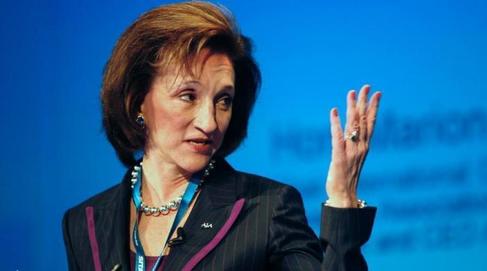
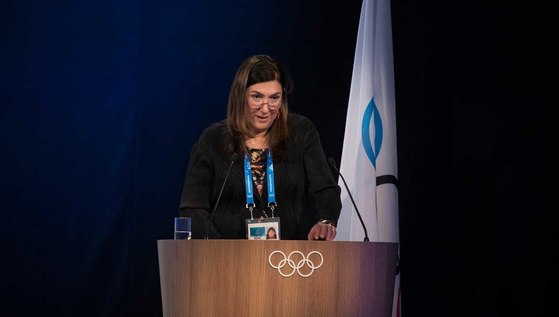


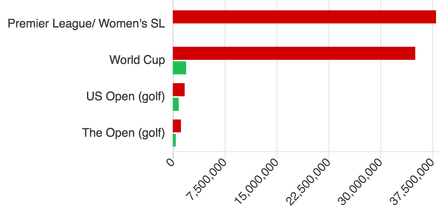
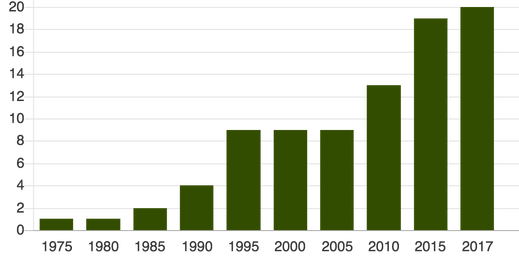
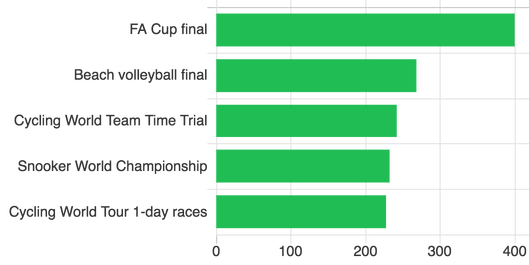
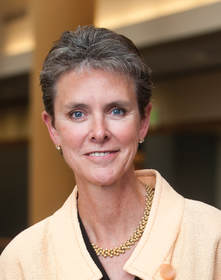
 RSS Feed
RSS Feed